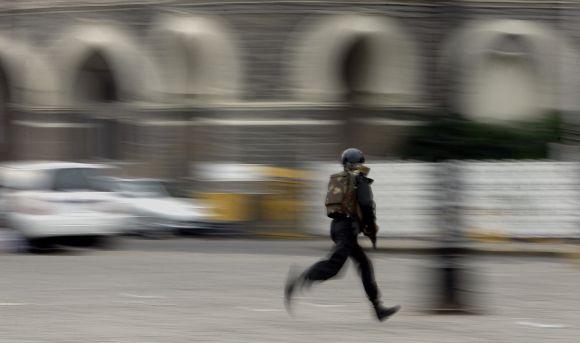Were they Indians?
They were Indians. But what does that mean?
Who told you this?
On the Pakistan side…
That they were…
That they were working with 10 local people.
Adrian Levy, co-author of the book The Siege: The Attack on the Taj, speaks to Rediff.com‘s Sheela Bhatt in a compelling interview.
In the first part of the exclusive interview, Levy revealed how America’s compromise with David Coleman Headley, one of the masterminds of the attacks, affected India’s national interest.
Part I: 26/11: ‘America sacrificed Mumbai to keep Headley playing’
In the second part, he speaks of the 26/11 conspiracy, how Ajmal Kasab and the other nine terrorists we picked and trained, the mysterious Honeybee and possible local help for the terrorists in Mumbai.
26/11 Exclusive: How the LeT chose Kasab and who Honeybee could be
This is the third and final part of the interview:
Was it an Inter Services Intelligence operation?
The ISI is very different to most intelligence outfits, in that it has a broad loosely knit community that have different functions within it. And the counter-insurgency, that is the counter-India function that deals with jihad, is staffed by long timers who can be at the top level for 20, 30 years. And they are known on both sides, by (India’s) Research and Analysis Wing and by the Intelligence Bureau and in certain cases in the Kashmir valley, by their code names, their radio call names.
And those people are no longer controlled by anyone. They have their vested interests. What one can say without any doubt is that some of those players, some of those senior agency (ISI) people, they were on the peripheries of that plan. They knew what was happening, who was involved, they knew David Headley.
He was given training; he was given the equivalent of non-commission officer training by the ISI, which was a compact course that ran for months in Lahore. And that training was a condensed version of what the ISI gives for first two years to new recruits inducted from the army.
And in video interviews Headley describes the process of that training. And he describes it brilliantly, clearly.
He was taught intelligence gathering, surveillance, counter-surveillance, technological training, secure communication, classic tradecraft of the ISI condensed down from two years to nine months. He was assigned to help the LeT.
We know that in Karachi, different people were ‘satellite-ing’ around the group, who also had very clear connections to the ISI. What is harder to say is: Where is the chain of command? See that is what the ISI did brilliantly. It’s not visible.
And what do you think of the civilian government in Pakistan? Did it have prior knowledge?
None. I mean the Pakistani foreign secretary was holed up in a hotel in New Delhi. And in fact senior civil servants from India were on an exchange in Islamabad and no one could get a flight home. I have spoken to all those civil groups. I absolutely believe that they did not have an inkling and were horrified.
They guessed it was the Lashkar because the thing is that that operation required discipline and there are only few groups that had the internal discipline to bring off an operation like that.
Buy The Siege: The Attack on the Tajhere
Please click NEXT to read further…
Source: Read Full Article


